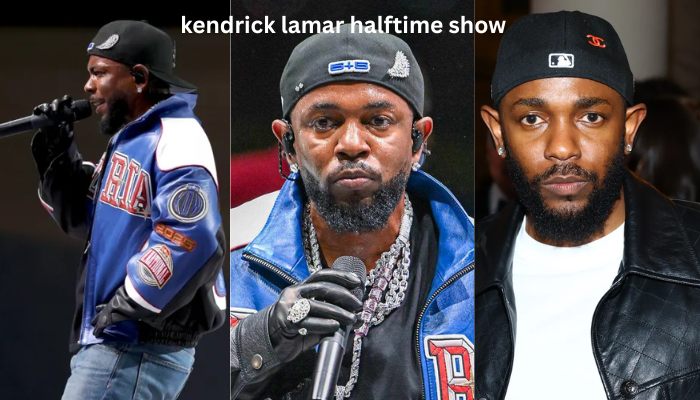The phrase “Kendrick Lamar Halftime Show” has quickly become one of the most iconic topics in both music and sports entertainment. Few artists have the cultural impact, lyrical genius, and commanding stage presence to transform a sports event into a global spectacle. Kendrick Lamar, often called the voice of a generation, has not only pushed the boundaries of hip-hop but has also elevated live performances into unforgettable cultural moments. When he steps onto a stage, especially for a halftime show, the world pays attention. His performances are more than concerts; they are layered with symbolism, commentary, and artistic mastery that redefine what it means to entertain and enlighten at the same time.
In this article, we will explore the significance of the Kendrick Lamar halftime show, from its preparation and cultural context to its execution and aftermath. We will also analyze the deeper meanings behind his performances, the critical reception, and the lasting impact on music, sports, and culture.
The Rise of Kendrick Lamar as a Halftime Show Performer
Kendrick Lamar’s rise to the halftime stage did not happen overnight. His journey from the streets of Compton to the global arena is one of the most compelling narratives in modern music. Unlike many entertainers who focus solely on spectacle, Kendrick has consistently blended powerful storytelling with unmatched lyrical skill. This unique approach made him a perfect choice for halftime shows, where the audience expects more than just entertainment — they expect a statement.
The NFL and major sports organizations often seek artists who can command diverse audiences, deliver memorable performances, and spark conversation long after the final whistle. Kendrick Lamar fits this mold perfectly. His ability to weave social commentary into high-energy performances ensures that his halftime shows transcend typical entertainment and resonate with broader audiences.
Why Kendrick Lamar Stands Out Among Halftime Show Performers
Most halftime shows are designed to be visually spectacular, with dazzling lights, choreography, and guest appearances. While Kendrick Lamar incorporates all of these elements, his artistry goes further. His shows are carefully choreographed narratives that reflect themes of identity, struggle, resilience, and triumph.
One reason Kendrick stands out is his mastery of symbolism. Whether through his choice of songs, costumes, stage design, or backup dancers, every detail contributes to a bigger message. His halftime shows are not just about music but about conveying a vision of society, culture, and the African-American experience. This level of depth and intentionality sets him apart from traditional halftime performers.
The Build-Up to the Kendrick Lamar Halftime Show
When Kendrick Lamar was announced as a headliner for a major halftime show, the anticipation was unprecedented. Fans and critics alike speculated about which songs he would perform, how he would structure the set, and what themes he might highlight. His track record of delivering groundbreaking performances at award shows and music festivals only heightened expectations.
The announcement also carried cultural significance. Hip-hop, once marginalized in mainstream spaces like the Super Bowl, was now at the center of one of the world’s most-watched events. Kendrick’s involvement symbolized not only his personal success but also the recognition of hip-hop as a dominant force in global culture.
The Setlist: A Journey Through Kendrick Lamar’s Career
The setlist of the Kendrick Lamar halftime show was one of the most talked-about aspects of his performance. It was carefully curated to balance mainstream hits with socially conscious tracks. Songs like “Alright,” “HUMBLE.,” and “DNA.” provided the energy and familiarity that mass audiences expected, while deeper cuts highlighted Kendrick’s commitment to storytelling and cultural reflection.
“Alright” stood out as a centerpiece of the performance. The song has become an anthem of resilience and hope, especially within the context of social justice movements. By including it in the halftime show, Kendrick delivered a message of unity and perseverance to millions of viewers worldwide.
Stage Design and Visuals: Storytelling Through Imagery
The stage design for Kendrick Lamar’s halftime show was another crucial element. Known for his attention to detail, Kendrick collaborated with some of the best creative directors and stage designers to craft a visually stunning experience.
The stage often incorporated urban imagery, symbolic props, and bold lighting schemes. Dancers in coordinated outfits added depth to the performance, moving not just for spectacle but to embody the emotions and themes of Kendrick’s lyrics. Every visual choice, from camera angles to color palettes, was deliberate and meaningful.
Choreography and Dancers: Amplifying the Message
Dance has always played a central role in halftime shows, and Kendrick Lamar elevated this element with choreography that was both dynamic and symbolic. His dancers were not just background performers; they were integral to the storytelling process. Their movements reflected themes of struggle, liberation, and collective strength.
By merging street dance styles with contemporary choreography, Kendrick ensured that the performance connected with both younger and older audiences. The dance sequences also mirrored the rhythms and cadences of his lyrics, making the entire show feel like a living embodiment of his music.
Fashion and Symbolism in Kendrick Lamar’s Halftime Show
Fashion is another powerful tool Kendrick Lamar used to enhance his halftime performance. His clothing choices often carry cultural, political, or artistic significance. For instance, all-black outfits might symbolize resilience and solidarity, while vibrant colors could represent celebration and triumph.
Kendrick’s halftime show attire often balanced streetwear influences with high-fashion elements, reflecting his dual identity as both a voice of the streets and a global icon. This approach not only added visual flair but also reinforced the messages embedded in his songs.
Audience Reaction: A Moment of Collective Experience
The audience reaction to the Kendrick Lamar halftime show was overwhelming. Fans inside the stadium were electrified by the energy, while millions watching at home shared their excitement across social media. Platforms like Twitter, Instagram, and TikTok lit up with clips, memes, and commentary immediately after the performance.
Critics praised Kendrick’s ability to merge entertainment with depth, calling the show one of the most memorable in halftime history. The performance resonated across demographics, from die-hard hip-hop fans to casual viewers unfamiliar with his discography. This universality underscored Kendrick’s rare ability to connect on multiple levels.
Cultural Impact of the Kendrick Lamar Halftime Show
Beyond entertainment, the Kendrick Lamar halftime show had a profound cultural impact. It marked a moment when hip-hop, once considered countercultural, fully cemented itself in mainstream tradition. Kendrick’s performance elevated the art form by showcasing its power to address societal issues while still captivating audiences on the world’s biggest stage.
The show also inspired discussions about representation, diversity, and the role of artists in shaping cultural narratives. By centering Black voices and experiences, Kendrick reminded viewers of the importance of authenticity and storytelling in mainstream spaces.
The Aftermath: Sales, Streams, and Recognition
One of the measurable outcomes of Kendrick Lamar’s halftime show was the immediate spike in his music sales and streaming numbers. Platforms like Spotify and Apple Music reported surges in plays of his halftime show setlist. Albums like To Pimp a Butterfly and DAMN. re-entered charts, demonstrating the lasting commercial impact of the performance.
Additionally, the halftime show solidified Kendrick’s reputation as one of the greatest live performers of his generation. Critics, fellow artists, and industry insiders hailed the show as a benchmark for future halftime performances.
Comparisons with Other Halftime Shows
Kendrick Lamar’s halftime show is often compared to legendary performances by artists such as Beyoncé, Prince, and Michael Jackson. While each artist brought their unique flair, Kendrick’s show stood out for its combination of intellectual depth and raw energy.
Whereas some halftime shows focus heavily on spectacle, Kendrick balanced visual elements with profound storytelling. This balance has led many to rank his halftime show among the greatest of all time, despite the high bar set by his predecessors.
The Role of Hip-Hop in Mainstream Entertainment
The Kendrick Lamar halftime show also highlighted the evolving role of hip-hop in mainstream entertainment. Once dismissed by critics and institutions, hip-hop has now become the dominant genre in global music culture. Kendrick’s presence on the halftime stage symbolized this shift, proving that hip-hop is not only commercially viable but also artistically profound.
His performance was a celebration of the genre’s roots and a testament to its ability to adapt, innovate, and influence. By bringing hip-hop to one of the biggest stages in the world, Kendrick Lamar further legitimized the genre’s central role in modern culture.
The Legacy of the Kendrick Lamar Halftime Show
The legacy of the Kendrick Lamar halftime show extends far beyond the event itself. It set a new standard for what halftime performances could achieve, blending artistry, activism, and entertainment in equal measure. Future performers will undoubtedly look to Kendrick’s show as a blueprint for how to deliver impactful performances on a global stage.
Moreover, the halftime show reinforced Kendrick’s legacy as not just a rapper but a cultural leader. His ability to harness music as a tool for connection and reflection ensures that his influence will endure for decades to come.
Conclusion
The Kendrick Lamar halftime show was not merely a performance; it was a cultural milestone. By combining electrifying music, symbolic visuals, powerful choreography, and meaningful messages, Kendrick transformed the halftime stage into a platform for both entertainment and enlightenment. His show demonstrated that music, when delivered with authenticity and purpose, can inspire, unite, and provoke thought on the world’s biggest stage. As time passes, the performance will be remembered as a defining moment in both sports and music history. Kendrick Lamar proved that a halftime show can be more than a spectacle—it can be a statement, a story, and a shared cultural experience.


